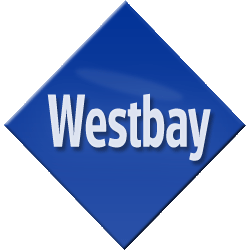- This topic has 15 replies, 1 voice, and was last updated 16 years, 8 months ago by
Pix.
-
AuthorPosts
-
10th August 2007 at 15:52 #48654
verma
Guestdear pix,
can u plz tell me abt loading factor vd example.
n tell me,hw v use loading factor in 1*3 and 1*1…11th August 2007 at 16:07 #48655pix
Guesti don’t have the info right now, but i’ll have a look later this week. sorry for the delay 🙂
11th August 2007 at 16:32 #48656seth
Guest#empty TCH /total TCH ==free factor…
# ocupied TCH/ total == load factor….
used in preferring or inhipiting cell from HO as (Cogestion releaf hand over)
12th August 2007 at 07:35 #48657verma
Guestthanx seth,
n pls tell me hw v use this in 1*3
n 1*1 hfs.12th August 2007 at 08:30 #48658pix
Guestload factor and free factor are parameters.. but the loading factor is a calculation made to estimate the usage of the frequency carriers when using synthetized frequency hopping.
so those are two very very different things…
13th August 2007 at 04:26 #48659Bhanu
GuestLoading factor is:
= (Toatal No of TRX Hopping/Total no of frequencies in MA LIST)*100So if u r having 3 TRX as hopping and 6 frequencies in MA List, then ur loading factor is 50%.
In 1*1, recommended value is 16.5% and in 1*3 it is 33%.(For Manual optimization), If u r using13th August 2007 at 18:01 #48660pix
Guestthanks bhanu 🙂
18th August 2007 at 06:44 #48661Naren
GuestOk can you explain what will happen if we have much load the loading factore??????????…….
18th August 2007 at 11:55 #48662bhanu
Guestur quality will degardes because collision frequency will increase, but if u r doing optimization through IOS(Intelligent Optimization Server, we call in Motorola)then it is possible to have 100% loading.
18th August 2007 at 12:13 #48663Naren
GuestHi Bhanu,
Thanx for ur feedback now can you explain me…..if we have 15 frequencies in MA list and using 1*1 with 16.5% LF then what are the points we have to take in our mind while fqu planning.18th August 2007 at 17:08 #48664pix
Guest>>> Naren,
In 1X1, you must still plan your BCCH frequencies.
You must take into consideration cells that belongs to different layers though. In 1×1 on the macro layer, cells in other layers might use different MA list.
And finally, with 15 frequencies in 1×1, your max rf load should be 10%, to ensure a good quality. Since RF LOAD = nb TRX per cell / nb FREQ, then :
nb TRX per cell = 15 x 10% = 1.5.
Meaning that you should keep an average of 1 bcch TRX + 1.5 tch TRX per cell. That is about 7 TRX per 3-sectors site.If you accept a poorer quality, you can increase the rf load up to 16.5%, which allows you to use 2.4 tch TRX/cell. Plus the BCCH TRX, that gives you 3.4 TRX/cell.
>>> Bhanu,
An optimization can lead to 100% of RF load with acceptable voice quality ? The only possibility to reach 100% rf load is to avoid overlap between two cells, isn’t it ? I really don’t understand how it is possible to get such a value… it would mean that the probability of interference is huge !!
I’m really curious about this…
Thanks,
20th August 2007 at 03:55 #48665bhanu
GuestHi Pix
I have seen it, it is not in our network it is in our competitor’s N/W, but When u do optimisation through Server, it suggests all the changes, it do optimisation itself then u can do nothing ,It collects data from BSC and suggests changes accordingly, yaa quality degrades, but still acceptable.20th August 2007 at 06:41 #48666seth
GuestDear All
Do you know about the load factor in 3G.
20th August 2007 at 08:56 #48667pix
Guestbhanu,
oh ok… so you “think” your competito can achieve that ? But i doubt the RF load can reach 100%. It is impossible…!
Even an optimization server can’t do it… don’t be afraid of machine, they are usually as good as the guy who programmed them 🙂 And this guy is certainly not better than us ! :))
21st August 2007 at 03:56 #48668Bhanu
GuestNo Pix, I do not think, it is so, it can be achieved through IOS.
One thing is very true that machine can never be intelligent than a human:) -
AuthorPosts
- The forum ‘Telecom Design’ is closed to new topics and replies.


